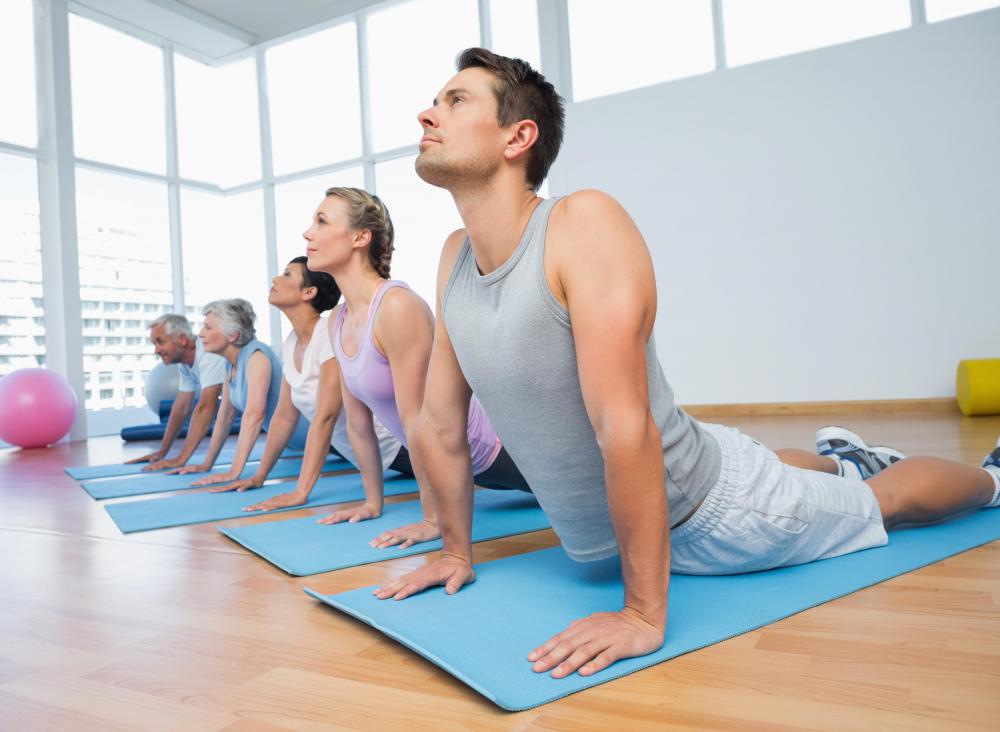At WiseGEEK, we're committed to delivering accurate, trustworthy information. Our expert-authored content is rigorously fact-checked and sourced from credible authorities. Discover how we uphold the highest standards in providing you with reliable knowledge.
What are the Different Types of Yoga for Depression?
There are several main styles of yoga for depression that either focus on boosting activity levels and reducing the body’s stress response, or concentrate on restorative practices, such as breathing and meditation. The main yoga poses for depression include Dolphin Pose, Dolphin Plank Pose, and Wild Thing for increasing activity, and Corpse Pose, Easy Pose, and Lotus Pose for promoting restorative processes in the body. Studies have found that most yoga for depression treatments can be effective, no matter what particular style is practiced. Many believe yoga improves mental functioning, reduces stress, and alleviates some of the symptoms of post-traumatic stress disorder (PTSD).
A 2009 Harvard study focused on the use of yoga for depression and anxiety, and compiled data from various studies across the world. Yoga was found to reduce the stress and pain response in a 2008 Utah study, while a 2005 German study found that yoga reduced feelings of depression by up to 50%. Similarly, yoga and focused breathing practices were found to reduce the effects of PTSD in Australian veterans, reducing moderate to severe symptoms down to mild to moderate symptoms.

One type of yoga for depression focuses on building strength and increasing heart rate. These poses, which are generally more strenuous, act in a similar manner as regular exercise on depression, while adding a breathing and awareness component. The first set of poses that are beneficial for depression sufferers are Dolphin Pose and Dolphin Plank Pose, which focus on shoulder opening, core strength, and leg flexibility. Wild Thing is another strength building pose that focuses on building whole-body strength and stretching the arms, legs, and back. These poses can increase heart rate and strength, reducing the severity of the body’s stress response.

Restorative yoga for depression takes a slightly different approach and focuses on breathing awareness and meditation techniques to improve both mental and physical health. The main restorative yoga poses for depression include the Corpse Pose, in which an individual lies down for deep breathing, and the Easy Pose and Lotus Pose, where individuals sit with their legs crossed in different orientations. These poses are designed to create a feeling of being balanced and centered, and they also go along with meditation practices and breathing exercises, which have also been found to reduce depression and anxiety. Using restorative yoga for depression is often advantageous for individuals who cannot safely participate in more strenuous yoga poses.
AS FEATURED ON:
AS FEATURED ON:













Discuss this Article
Post your comments